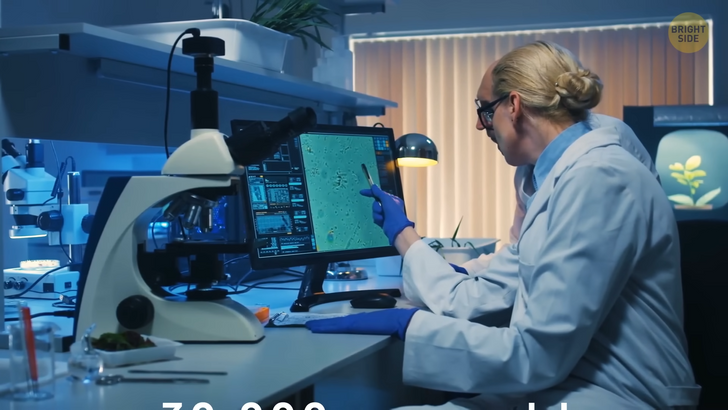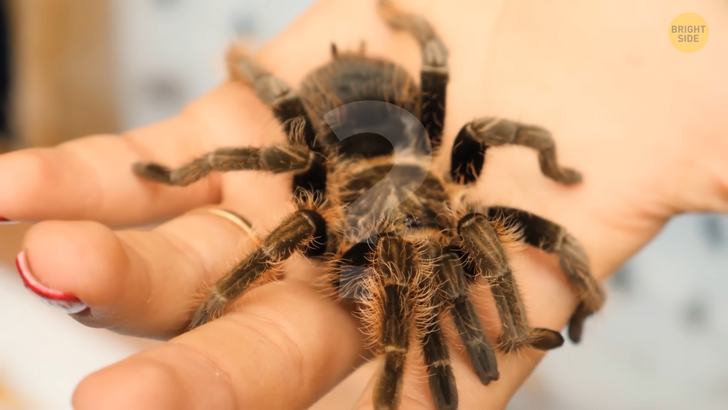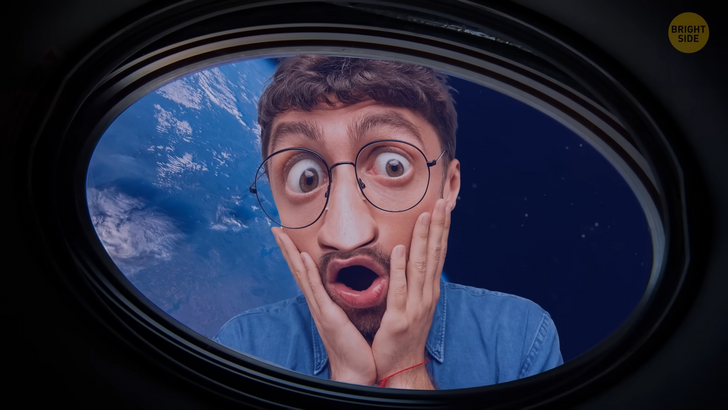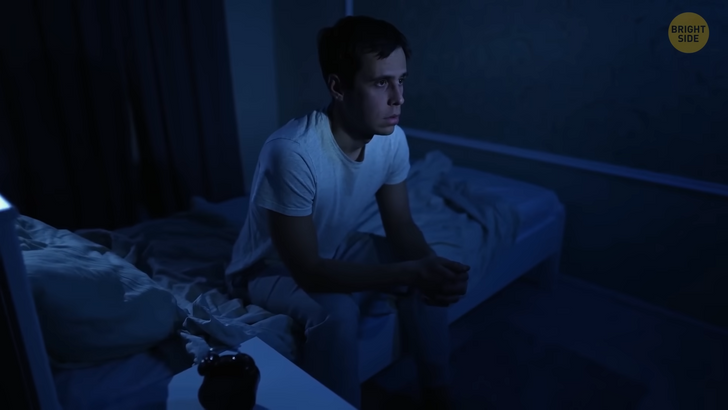10 Dangerous Self-Care Mistakes We Make When Trusting Beauty Bloggers

There’s something exciting about discovering scary and odd facts. Do you ever wonder about real-life creepiness? Ready to be freaked out?
There’s a possibility that the Sun can explode. Yet, we’re living our lives as if our star will always continue to rise and set.
Imagine the Sun exploding right now; you would be unaware of the catastrophe for over 8 minutes — that’s how long it takes sunlight to reach Earth. If all this energy hit the Earth, the destruction would start veeery shortly after that. After all, it’s the Sun, and the star isn’t gonna wane like a candle.

Here is another scenario. What would happen if the world lost all its oxygen for five seconds? Five seconds might not look like much at first glance, but it’s more than enough for us to have very serious problems.
First of all, people outside would have severe sunburn. Plus, our inner ear would explode since it wouldn’t have enough time to adapt to the new oxygen levels. All because air pressure on Earth would drop by 21%. Without oxygen, every type of transport — except electric — would instantly fail. This means that the engines of planes in the sky would stop working, and cars would get stuck in the middle of the roads.
Oh, and our beautiful blue sky would turn dark. But you probably wouldn’t have time to look up as Earth’s crust would crumble under your feet. After all, it’s made up of around 45% oxygen. Enjoy the free fall.
Even though these scenarios could potentially happen, they feel more like the plot of a Doomsday-themed movie. So I’ll continue with a somewhat more realistic but equally scary variation of the “end of the world.” Did you know that bacteria and viruses can live in the ice? Researchers have found ancient viruses, and some of them are unknown to science. For instance, in 2014, scientists found a virus that was around 30,000 years old.

Luckily, scientists say these viruses are unlikely to harm people. So, you can put your doomsday pack aside. But microbes that can cause problems do concern scientists. For example, after a heatwave in 2016, there was an outbreak of a serious infectious disease called anthrax. The source was an infected reindeer carcass that had been trapped under ice since 1941. Dozens of people and hundreds of reindeer were infected. In the end, some of the families living in the area had to be airlifted somewhere safe.
On a beautiful spring day, you’re mowing the lawn. You can feel that awesome smell of freshly-cut grass. Well, that’s actually an S.O.S. signal. Scientists say that plants release a special chemical as a way of signaling distress. On the bright side, the aroma also attracts beneficial insects.
Spiders can survive in space. Two spiders were sent to space, and they turned the gravity-free spaceship into their new home. The male survived in zero gravity for 65 days. It was still alive after returning to Earth. And the female built 34 webs and molted 3 times.

We tend to forget about tiny animals because they’re not very visible. But science says we shouldn’t. They’re important for the ecosystem. Now might also be a good time to inform you that climate change is making spiders bigger. A 2009 study, for example, revealed that as the Arctic gets warmer and has earlier springs and longer summers, wolf spiders get larger. And — because larger spiders can have more offspring — they become more abundant.
Wow, spiders can survive in space; they’re getting bigger... What else can they do, swim? Umm, actually, yes, they can swim, too. They aren’t awesome swimmers. I mean, they aren’t really into it. They only swim when they accidentally fall into the water or are being chased by predators.
The reason our fingers get wrinkly after we stay in the water for too long is quite practical. This provides us with a better grip on slippery surfaces. Yet, this feature can be lost due to problems with nerve integrity.
For example, a 28-year-old mechanic accidentally fell through a glass door and had a deep cut on his wrist. His tendons were injured. During the recovery process, he discovered an interesting thing. His fingers “didn’t go wrinkly.” Doctors say that there’s a possibility of having sensory defects after such accidents, and your fingers might never get wrinkly again.

The blobfish, as we know it, resembles a melted Pokémon. But in its natural habitat, this creature actually looks like a regular fish. Imagine yourself getting thrown into outer space. This is what happens to the fish. I mean a difference in atmospheric pressure.
This poor creature looks like this when it gets raised to the surface because it suffers from decompression damage. Back at home in the deep sea, the blobfish isn’t so blobby and grumpy. It’s a deep-sea creature that lives beneath the “twilight zone” at a depth of 985 feet. It doesn’t have any natural structural support. That’s why it bloats when fishers pull it to the surface where the pressure is way lower.
A young woman began to have headaches and other health problems. She went to the doctor, and they discovered an evil twin in her brain. Well, sort of. They found out that she had a mass called teratoma in her brain. Some doctors say that when the woman was an embryo, certain cells ended up where they weren’t supposed to be — you know, in her brain. It’s a relief to know that specialists removed the mass, and the woman recovered from this.

Do you know that CNN has a pre-recorded broadcast that they are going to air during the end of the world? Yes, they’re prepared for the last day on Earth. It’s called “Turner Doomsday Video.”
Surgeons claimed that a fir tree had been growing inside the human body. A man came to the doctor suspecting something was wrong with his lungs. The doctor said that he had inhaled a fir tree seed that had sprouted and begun growing in his lungs. But some other professors say that it’s too dark inside a lung, and most seeds need light to grow. So there’s a possibility that this is nothing but a hoax.
The ocean is the source of life on Earth. It covers more than 70% of the planet’s surface. Yet, more than 80% of our ocean is unmapped, unobserved, and unexplored. Unbelievable!
Here is another sinister fact. Some ants get turned into zombies by a fungus that manipulates their brains. The terrifying fungus infects a carpenter ant, and then it grows through the ant’s body. It gets the nutrients it needs and literally takes control over the ant’s mind. The fungus does this to make the ant leave its nest and climb a nearby plant stem. The fungus directs the insect until it finds the right temperature, humidity, and height for the growth of the creepy fungus.

Have you ever spooked yourself while looking in the mirror? Your brain sort of plays tricks on you to make you see “monsters.” This is probably related to the Troxler Effect. It’s an optical illusion affecting visual perception. When you fixate on a specific point — even for a short period of time — an unchanging stimulus away from the fixation point will dissolve and disappear. This is ultimately related to how we perceive things, both visually and mentally. Do you think this is how the legend of Bloody Mary appeared?
Let’s say you arrive at a hotel after a long journey, and all you want is to sleep and get rest. But no matter how hard you try to fall asleep, you’re still up late at night. And when you finally manage to doze off, you either wake up frequently during the night or way too early in the morning. Researchers have a name for this phenomenon: the “first-night effect.” Studies claim that poor sleep in an unfamiliar place may be connected to protecting the sleeper from potential danger. When we are in an unfamiliar environment, only half of our brain really rests. Some other species also do that, so we aren’t alone. Comment below if you know any spooky facts that I failed to add to this list!











